Student Success: Student Success: Gregory Boratyn
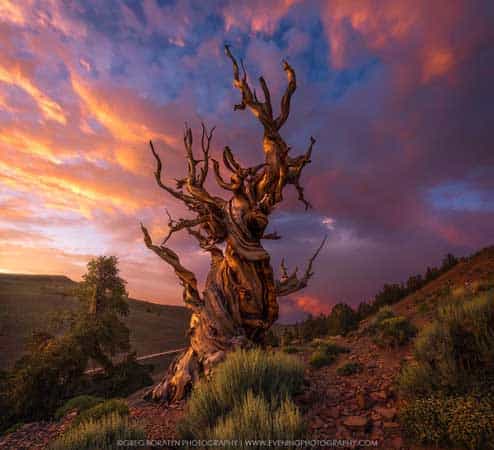
1. When did you realize that photography was the field you wanted to pursue?
I’m a software engineer, so my day job involves sitting many hours in front of a computer screen. At one point in my life I realized I needed to get out of my office more often to disconnect from technology and reconnect with nature instead. When digital cameras became popular and easily available, I purchased my first simple point-and-shoot Minolta camera and took it with me during a two week vacation in Hawaii. I loved the fact that I was able to see and organize my images on the computer, adjust them using software and then print them on my printer at home. This happened about 15 years ago. Since then, I have developed such an enormous passion for photography that it consumes all my free time.
I now extensively travel all over the world taking pictures of places that offer unique landscapes hardly anyone has seen or photographed before.
2. When did you enroll at NYIP?
I won a photography contest organized by Topaz Labs and NYIP several years ago. The prize was one class at NYIP so I took it. It was a great experience and I truly enjoyed the time and learning activities.
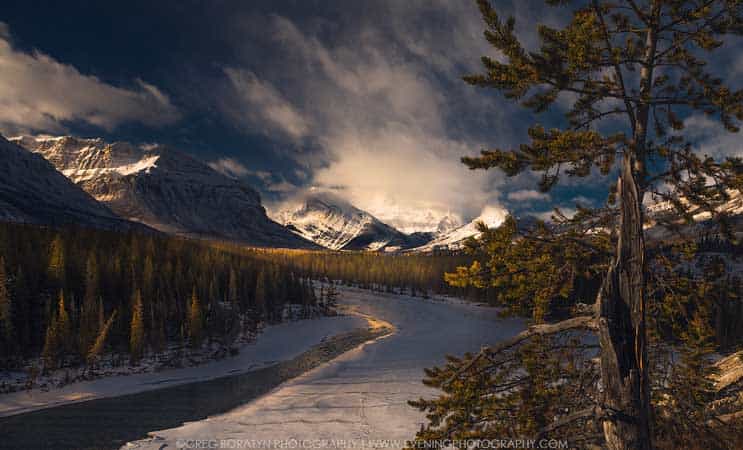
3. What was your coursework like?
While all of the photography courses at NYIP are great, I decided to take the Business For Photographers class to learn more about how to monetize my passion. It costs a lot of money to travel to places that offer unique scenery, so I wanted to learn how to earn money in photography in order to finance my trips.
4. What type of work are you doing now?
As I mentioned, I’m a software engineer- so my everyday job consists of writing software. But weekends and any vacation time I have, I use to travel to places that I enjoy photographing. I just returned from a trip to Canadian Rockies (Banff and Jasper National Parks in Alberta) where I spent over a week driving highways 1 and 11 between the mountains, taking pictures of frozen lakes and snow covered mountains. I love winter and I had excellent weather there, so this was a very successful trip for me. Besides running workshops I occasionally participate in art festivals, like the famous Festival of Arts in Laguna Beach, California where I exhibit and sell prints of my photographs. I also post images to many websites, helping companies get some exposure, or business looking for background/cover images, or magazines. I was contacted by companies like Apple, and sold many images to printing houses and photography magazines (in US, UK, and France).
My website has a list of my published work and all magazine contributions so far.
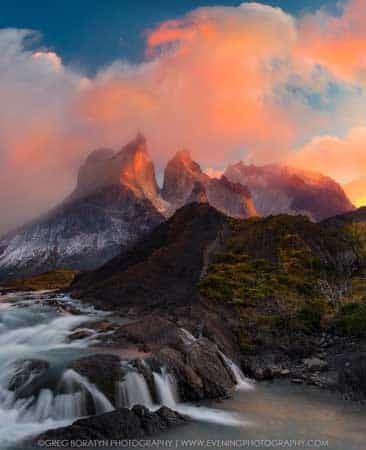
5. Tell us about Patagonia Tours!
Patagonia is a very beautiful place that has a lot to offer, especially to landscape and nature photographers. Several years ago a friend of mine from Argentina asked me if I was interested in running workshops there with him taking care of all logistics, and of course I agreed. Since then, I’ve traveled to both Argentina and Chile at least five times and ran workshops- first starting with small groups of 5-8 people, but now up to 14.
With 14 people it’s very difficult to run a workshop alone, so I normally team up with someone, another passionate photographer fellow that can help me ensure all participants safety, provide or assist me with teaching activities and any hikes we may have. This year I will run my Patagonia Workshop with Jim Zuckerman - a UCLA in Photography graduate and 45 years experienced, sensational photographer.
6. How do you find new clients and advertise the work you do?
I advertise my workshops on my own or on social media websites like Facebook or Instagram. Sometimes I also run Google Ads to help me promote my services.
When I’m participating in art festivals, frequently my customers ask me about my photography trips. Surprisingly many of them want to go with me despite the fact they aren’t serious, or not photographers themselves at all. I guess they feel safe going with me, and they just want to see places that they otherwise wouldn’t go.
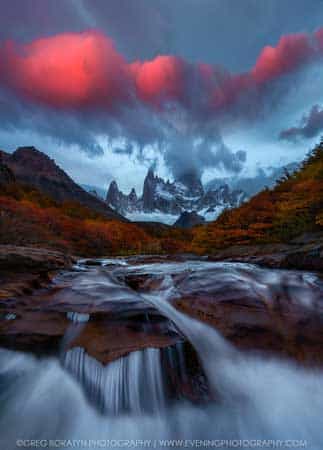
7. What qualities do you think a successful, aspriring photographer needs?
There are many qualities that I’d like to list here. First, be stubborn and don’t give up if you think your pictures don’t look as good as someone else’s. This is the most common issue in photography now. Amateur photographers glorify the successful ones, but never analyze why they are successful, what makes them different or why their pictures look so good. Back when I was learning even basics of photography (exposure, light, composition, timing, post processing etc.), I often compared myself and my images to those that were taken by successful photographers. If I liked theirs better, I analyzed why that was the case. Why their images look good and mine don’t. Is it their camera (and that’s almost always not a case) or technique, or maybe their choice of timing is better? I even contacted some of them and they helped me understand what was I doing wrong and what they liked or didn’t about my shots.
Another quality is quantity of passion you have towards photography. Is this something you really want to pursue in your life and do for as long as you can? Traveling and seeing places is nice, but photography involves a lot more. You have to be in good shape to hike, in many cases very extensively to see and photograph some unique locations that can be difficult to get to but may get you a winning shot. There are times I hike for several days to see a mountain or lake from the other side, the less or never photographed before, and get a shot I like. Even the so called “shot to death” location of places everyone has photographed before, I try to see differently maybe from higher elevation, or from the ground level using fisheye lens etc. This will make my shot stand out from the rest.
Learning how to properly post process your images on a computer is a very important part of photography as well. The majority of images these days are digital and when shooting in raw all images require some level of post processing to make them look as close as possible to what was seen with your eyes. Raw images lack contrast, color, sharpness and correct brightness. The information is there embedded in the file but needs to be brought out in post processing. Learn how to use Adobe Lightroom or Photoshop as these programs, or similar, are a must to know to be successful.
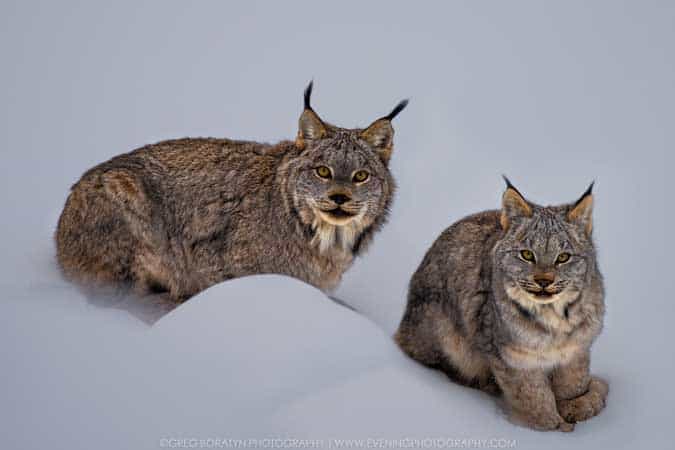
8. What do you always carry with you in your camera bag?
My most often used camera now is Pentax K-1 and the “golden trio” lenses: The 15-30mm f/2.8, 24-70mm f/2.8, and 70-200mm f/2.8 lens. I also occasionally use the 100mm f/2.8 macro lens, or for a wildlife shots the 150-450mm f/4-5.6 lens. My lenses are all Pentax lenses but there are very similar offerings from other brands such as Nikon, Canon, Sigma, or Sony.
9. What’s the most interesting thing you learned at NYIP?
How to develop a good website, post the most appealing portfolio of images people can view and potentially buy, and how to advertise my photography services.
10. If you had to pick one, what was the most memorable photography project you’ve ever completed?
That would be a small photography trip I took to the Ancient Bristlecone Pine Tree Forest in White Mountains, Eastern Sierra Nevada, California. There were difficult conditions. It was cold and windy and I was shooting at 11000 feet at night to capture Bristlecone pine trees with the Milky Way in the background. It was an eerie/spooky experience. Because of the elevation, the first thing I’ve experienced was difficulty of breathing. Taking 20 steps up a small hill felt like climbing a mile high mountain.
The place is far and difficult to get to, even in 4 x 4. There is no one around and no cell phone reception. A pitch black night with just stars above me was beautiful though, and the images I’ve captured were rewarding.
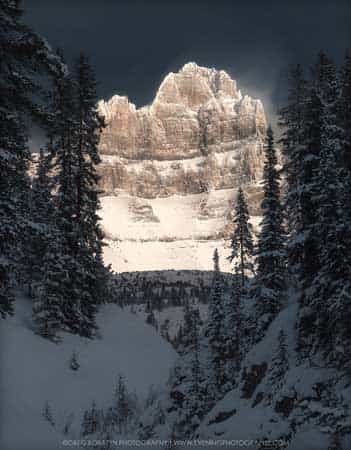
11. Describe a day in your life as a photographer.
I just returned from my trip to the Canadian Rockies, so I will use that trip as an example. I was waking up way before the sunrise each day and dring to places I wanted to photograph at sunrise.
I normally analyze and scout the location before, during day time, or get any information I can from google. I (occasionally) will also purchase a pdf file/book describing the location in detail as well.
For my Canadian trip, I purchased several books written by a Canadian photographer that has been shooting at those locations for many years now. He gave great advice as to where and when to go to get the best shot. This was my first winter trip to the Canadian Rockies so I needed as much help/advice as possible. Those books were specifically written for winter photography and had GPS coordinates so they were very useful and saved me a lot research time.
In Canada, days are very short in the winter and the sun’s light is nice and soft throughout the whole day, so I continued shooting (if weather allowed) after sunrise until sunset with just small breaks to eat something. Many days I drove from one location to another (for sunset) even 200 miles so I needed to know when exactly that would happen. So, as a software engineer I wrote a photography application for my iPhone (available for free on iTunes Store called Photos Master) that calculates sunrise and sunset times based on GPS coordinates retrieved from my phone. I used my app to see when exactly sunrise (or golden hour) would occur at any given location I was set to go to. After sunset, I often continued shooting long exposure images of frozen lakes and stars.
12. What’s the most rewarding part of studying photography?
The more I learn about photography the more it changes the way I perceive the world.
I observe and pay attention to light, weather, and places I’m about to photograph differently than several years ago. I study and research all I can to take successful images. For example, I look at the surroundings of a location I’m shooting at and I check for what I can use to improve my composition. Is that tree going to be a good addition, or I should avoid including it in my final shot? Should I get closer to it, or maybe locate it in the right edge of the frame? Is the light harsh or soft (bad or good) to photograph now? Do I need one or two exposures? How I “hide” excessive light when shooting into the sun? A tree branch would be nice to have etc.
I guess I look at the world now more in a photographic way, “two-dimensioning” it, and seeing what the camera sees. Another interesting benefit of being a photographer is its influence on my health. I’m constantly at the gym exercising and increasing my abilities to go/hike further or carry more weight in my backpack so that I can stay longer at some secluded location. This is rather unexpected and maybe the most overlooked (yet very important) benefit of being a photographer. But in order to be successful in photography one has to be in a very good shape as well. Images of places that are taken right from the road or car will most likely be photographed by many people many times before, and they will likely be mediocre shots at best.
13. What subject is usually your favorite to shoot?
Interestingly it changes. It used to be trees/forests but now I’m all about rivers/lakes with giant mountains in the background. I still like trees, especially unique ones like sequoias or the old Bristlecone Pine Trees (some 5000 years old), but I want to explore mountains more. I’m planning a trip to Nepal this year to photograph the Himalayas. I may also go to Tibet and see the Himalayas from the Tibetan side as well. But, money and time is the biggest issue for me, so I may look for some sponsorship and extra vacation time. Maybe take a short sabbatical from my day job.
14. If you could give one piece of advice to our current and prospective students, what would it be?
Read the manual your camera came with and understand how all the buttons and dials work.
Set it to manual mode and shoot, see what you get. Is the image correctly exposed?
Can you shoot without autofocus? Turn it off and shoot one frame. Is the image sharp?
Is the relationship between ISO, shutter speed, and aperture understood? How does one affect another?
Understand image noise, bit depth, dynamic range, hyperfocal distance, focal length, depth of field, white balance etc. are also very important concepts that need to be mastered. They are not hard to understand, they just need to be memorized and used constantly. Practice, practice, practice, and don’t wait for trips to use your gear. Create projects and shoot at home. Small macro photography can be done anywhere. On weekends, go to a nearby park and shoot it at sunrise/sunset or at night using long exposure techniques where above-mentioned aperture, ISO, and exposure time (or shutter speed) relation has to be understood and utilized. Finally, learn post processing techniques using software like Adobe Lightroom or Photoshop to make your images come alive. Sign up for NYIP and take a few classes or a whole photography course.
Want to learn more? NYIP offers online photography classes that can help you learn photography or start a new career. Request your free course catalog




